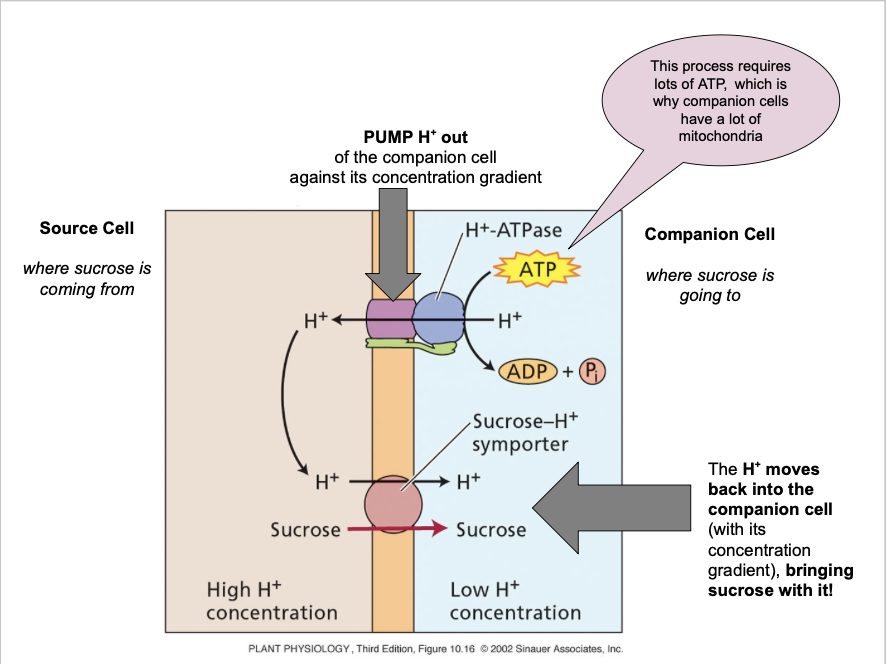Translocation in the Phloem
1/8
There's no tags or description
Looks like no tags are added yet.
Name | Mastery | Learn | Test | Matching | Spaced |
|---|
No study sessions yet.
9 Terms
Translocation
the process by which plants move organic compounds (primarily sugars produced during photosynthesis) from the leaves to other parts of the plant through the phloem tissue
Translocation is bidirectional
Phloem sap can move UP or DOWN the plant from the source tissue.
In source tissue, glucose is made in photosynthesis and converted to sucrose for transport in the source cells
Sucrose is actively transported into companion cells using a sucrose - H+ cotransport protein.
Sucrose moves from the companion cells to the sieve tube cells through plasmodesmata. Called “phloem loading”.
Phloem loading leads to a high concentration of sugars in the phloem, making the phloem HYPERTONIC
In response, water enters sieve tube cells from the xylem via osmosis
The addition of water increases the pressure of the liquid in the phloem. Increases HYDROSTATIC PRESSURE.
Phloem unloading (active transport) leads to lower sugar concentration (as a result, the phloem cells become hypotonic)
Water leaves the phloem and enters xylem via osmosis. This water rejoins the transpiration stream.
The removal of water decreases pressure in the phloem.
Sucrose is moved into sink cells where it is converted to starch for longer-term energy storage, or converted back to glucose to fuel metabolic reactions of the sink cell.
Sucrose-H+ cotransport protein

Materials translocated in phloem
Translocated solutes are mainly carbohydrates
Sucrose is the most common translocated sugar
Phloem also contains: amino acids, proteins, inorganic ions, and plant hormones
Rate of translocation
Movement in the phloem is rapid, well in excess of rates of diffusion (~1m/h)
The pressure-flow model of phloem translocation
At source end of pathway:
Active transport of sugars into sieve cells
Water flows into sieve cells and turgor pressure increases
At sink end of pathway:
Unloading (active transport again) of sugars
Water flows out of sieve cells and turgor pressure decreases
Flow is driven by a gradient of pressure.
Energy is required to establish the pressure gradient, but energy is not required by cells of the pathway itself.
Sink vs Source

Stem Girdling
A method used to study phloem transport by removing a ring of bark from a tree, which disrupts the flow of nutrients and causes a buildup of sugars above the girdle → Without the ability to store the sugar in the roots, the plants will store the sugar in fruit → produce fruits bigger than usual